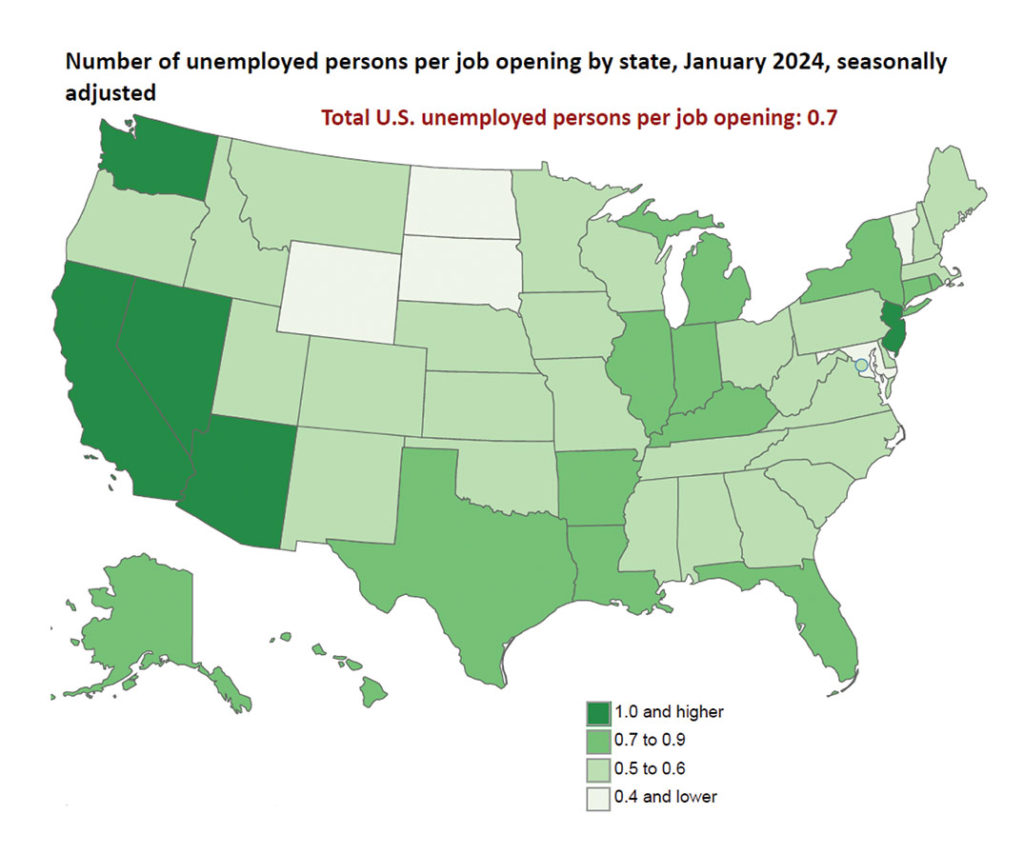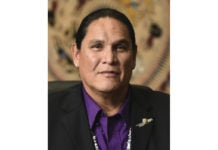by James M. Klas
Indian gaming came out of the pandemic with a labor shortage of historic proportions. While the labor problems actually started before the pandemic, the closures and subsequent “great resignation” aggravated them beyond anything previously experienced. Declining labor force participation, reductions in the availability of foreign labor, underutilization of some labor force segments and lack of competitive wage rates all drove the problems. As a result, casinos could not fully reopen all of their facilities for all of the hours the demand would support due to lack of staff. The good news is that the underlying problems are diminishing and labor availability is beginning to improve. The bad news is that there is still a long way to go.
Coming out of the pandemic, there were nearly two jobs available for every one person seeking a new job nationwide. More jobs than potential employees actually first appeared in April of 2018 due to declining labor force participation. However, the problem accelerated coming out of the pandemic due to people reevaluating their career choices or moving to other jobs after pandemic closures temporarily cut off their prior positions. Another factor was the hard stop on the flow of foreign-born workers into the country for public health and political reasons. Foreign workers are particularly critical to rural resorts and their surrounding economies.
As of April of this year, the labor force participation rate had recovered all the way up to 62.7 percent from 61.3 percent in early 2021 (it was lower still due to closures in 2020). Nevertheless, it is still below the rate at the end of 2019 of 63.3 percent. Those gaps may not seem large, but every one-tenth of one percent change equals approximately 270,000 potential workers. That means the 0.6 percentage point gap between 2019 and today equates to over 1.6 million fewer people working or looking for work.
The recovery in participation also hides a problematic underlying pattern. The recovery has been fueled entirely by foreign born workers. There are now 4.3 million more foreign-born workers in the labor force, while U.S. born workers are actually still down by 185,000. Foreign-born people of working age in the U.S. are much more likely to seek work than people of the same age born in this country. Figure 1 shows the labor force participation rate for different classifications of people of working age. As the table shows, participation by foreign born people of working age is nearly four percentage points higher than for U.S. born people of the same age.
Figure 1

The table also highlights another seriously under-utilized segment of people of working age, the disabled. Only 24.5 percent of disabled people of working age are participating in the labor force at present. The disabled category does not include those who are incapable of any labor due to the magnitude of their disabilities. Of those who have the physical and mental capacity to work in some form, less than one in four seek work at present. Every percentage point of increase in labor force participation amongst disabled adults would result in 310,000 additional potential workers. Target Corporation and many other companies have long shown that disabled workers can be successfully integrated into both front-of-house and back-of-house positions.
Despite the partial recovery in labor force participation due to the increase in foreign-born workers, the number of jobs available is still greater than the number of workers looking in all but five states. Nationally, there are still over 1.4 jobs available for everyone seeking work, better than two, but still a serious problem. The map in Figure 2 shows workers per available job for each state in the country.
Figure 2

The improvements to date have come at a cost, literally. The average hourly wage rates for gaming industry employees have increased significantly over the past five years. The average wage for all occupations in the U.S. is up 22.4 percent from 2019. However, the average wage for foodservice workers is up 29.3 percent. The average wage for gambling service workers is up a whopping 55.2 percent. The average wage for hotel desk clerks is up 25.6 percent. Beyond the need to increase wages, employers have also found the need to enhance benefits like vacation and PTO, health insurance, meals and uniforms, training and educational support, and opportunities for
promotion.
As casino managers have reached the practical limits of pay and benefit increases, other initiatives have moved to the forefront. Offering greater flexibility in scheduling can help combat one of the main lifestyle detriments, with pay differentials to recognize/reward less popular shifts. Less obvious, but as important, is the broader work environment. Back-of-house areas are traditionally undersized and under-designed, making the jobs less attractive. More than just improved locker rooms, breakrooms and employee meals are needed. Storage space, distance from storage areas to actual usage, workspace, lighting, employee parking and ingress/egress and other physical facility factors can affect job satisfaction. Cross-training and utilization can also fill short-term holes and increase variety and satisfaction in the work environment.
When it comes to technology, automation usually comes to mind first. Automated cashiering systems, automated hotel check-in, automated retail cashiering and even automated food and beverage ordering have already moved from the realm of demonstration projects to workable everyday solutions. The hottest topic in technology, AI, also has a role to play. Attempts to use AI to assist in finding, contacting, performing initial screening and even determining areas of greatest need or potential for employees are expanding, and learning as they go.
There are many reasons for optimism in Indian gaming, including improved labor availability, albeit at a higher cost. Current trends suggest additional improvements will be incremental, but ongoing. The next phase for casino staffing will be recovering service standards and consistency lost to pandemic and post-pandemic staffing challenges. Operators fastest out of the blocks with firming up their service offerings will have the advantage.
James M. Klas is Co-Founder and Principal of KlasRobinson Q.E.D., a national consulting firm specializing in the economic impact and feasibility of casinos, hotels and other related ancillary developments in Indian Country. He can be reached by calling (800) 475-8140 or email [email protected].















































